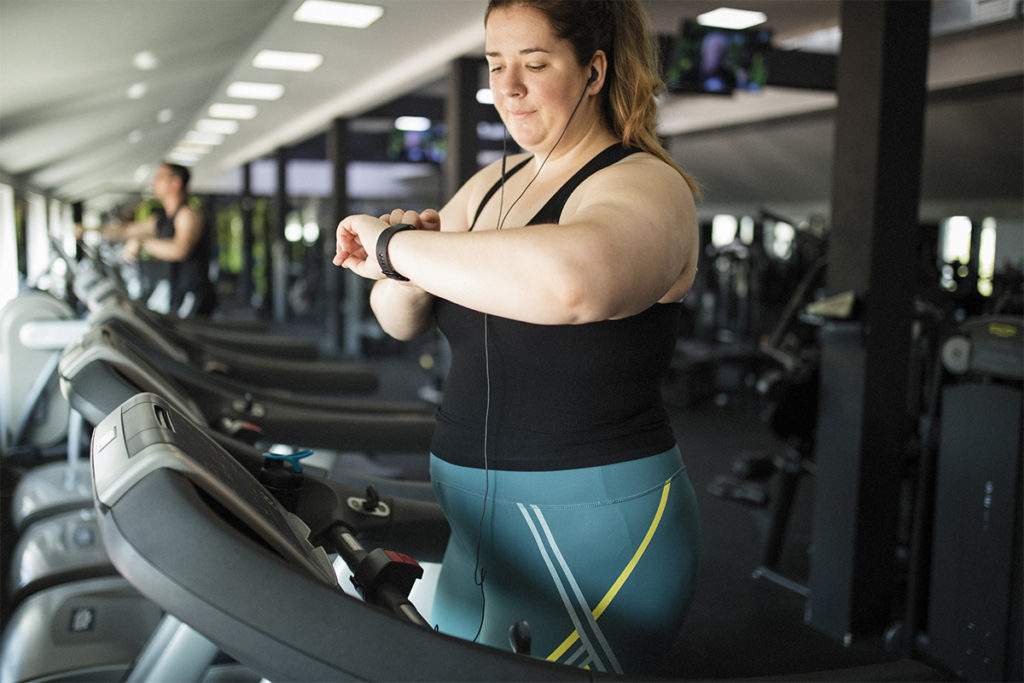Eating Or Fasting For Fat Loss: A Controversy Resolved
Paoli, A., et al. 2011. Exercising fasting or fed to enhance fat loss? Influence of food intake on respiratory ratio and excess postexercise oxygen consumption after a bout of endurance training. International Journal of Sport Nutrition and Exercise Metabolism, 21 (1), 48–54.
As exercise professionals strive to know the right mix of exercise and diet for optimal performance and weight loss potential in their clients, one controversy endures: Will a person burn more fat during the day by fasting in the morning prior to training or by eating a light breakfast before the workout?
The notion that fasting before training leads to greater fat loss is based on the fact that storage of glycogen (the stored form of glucose) is much lower after an evening of sleep—the supposition being that exercise before eating may enhance fat burning. As Paoli and colleagues (2011) note, some research has focused only on the calories expended during the workout, an approach that has yielded mixed results because exercise intensities and durations differ. Paoli and associates argue that for optimal weight loss benefits, it is more influential to determine the amount and type (fat vs. carbohydrate) of calories expended during the hours after the workout. Did their study resolve this debate? Read on to find out whether these researchers recommend fasting or feeding prior to morning workouts.
Subjects. Eight trained men volunteered for the study. Their average age, weight and height were 27 years, 207 pounds and 70 inches.
Testing. Over the course of a 2-week test, each of the men volunteered for a fasting (FST) test and a food-fed breakfast (FED) test, with 1 week separating the tests. The volunteers did a 36-minute cardiovascular workout on a treadmill at 65% of their heart rate reserve. Subjects initially completed a graded maximal cycling ergometer test to determine their maximum heart rates. This ensured that everybody would exercise at the same intensity.
Calorie expenditure data was collected (via oxygen and carbon dioxide gas analysis) 12 and 24 hours after each test condition. In the FST condition, the men performed the morning workout having eaten no food during the previous 12 hours. Subjects ate a normal breakfast after the workout. In the FED condition, the men did their training after first eating a normal breakfast. In both conditions, pre-exercise gas analysis was collected in the morning to establish baseline data.
With gas analysis, the authors also assessed respiratory exchange ratio (RER) data. RER is a meaningful scientific method of measuring fat and carbohydrate calories burned during a set period of time (before, during or after exercise, for example). RER is determined by measuring the volume of carbohydrate expired per minute (VCO2) in relation to the volume of oxygen consumed per minute (VO2).
The day before and the entire day after the FST test, subjects ate the same diet as they did before and after the FED test. Thus, food intake in both tests was identical—all that differed was the timing of breakfast. The researchers evaluated the men’s dietary intake with well-established dietary software to ensure that subjects followed the diet instructions.
FST condition. After completing the pre-exercise (or baseline) data collection, the men completed the 36-minute treadmill exercise and then ate their breakfast. During the next 24 hours, they ate a standard lunch, afternoon snack, dinner and breakfast the next day. Researchers collected calorie-expenditure data 12 hours and 24 hours after the workout.
FED condition. The men followed precisely the same schedule as they did in the FST test but ate their breakfast before the workout. Each subject ate a 673-calorie Mediterranean breakfast (25% protein, 53% carbohydrate and 22% lipids)—considered standard for a large segment of the population of Italy, where the study was conducted.
Figure 1 depicts the 12-hour and 24-hour postexercise oxygen consumption results of the FST vs. FED condition tests. At both data collection times, oxygen consumption was significantly higher (according to the statistical analysis) in the FED state. Oxygen consumption is a measure of energy expenditure. The more oxygen there is being consumed, the more macronutrients are being used, and thus the higher the caloric expenditure is. So Figure 1 clearly shows that subjects were burning slightly more calories 12 hours and 24 hours after exercising in the FED state than they were after doing the same workout in the FST state.
Figure 2 depicts the 12-hour and 24-hour postexercise RER results of the FST vs. FED condition tests. At both data collection times, the RER was significantly lower (according to the statistical analysis) in the FED state. RER is a measure of macronutrients being utilized by the body. During exercise, carbohydrate and fat are the primary fuels. Protein is used very sparingly during exercise, typically during the final stages of exhaustive bouts of training.
As RER rises, the body uses more carbohydrate for its energy needs. As RER declines, the body burns more fat for its energy needs. Figure 2 shows that in the FED state, RER was lower than it was in the FST state, and thus the subjects were burning more fat as fuel 12 hours and 24 hours after exercising in the FED state than they were after doing the same workout in the FST state.
For decades, some exercise “gurus” have been proclaiming that to lose more fat, enthusiasts should do their morning workout in a fasted state. This research clearly refutes that claim. Indeed, if a client seeks to burn more calories from a fat source, eating a light breakfast before the morning workout would be recommended. After the training session, this produces a sustained increase in metabolism (i.e., an increase in the chemical reactions in the body that liberate energy, measured by oxygen consumption) and a reduction in RER (causing the body to burn more fat as fuel).
Encourage clients to eat or drink something easily digestible at least 20–30 minutes (or up to 1 hour) before the morning workout. Because glucose is the preferred energy source for most exercise, a pre-exercise morning snack should include foods that are high in carbohydrates and easy to digest. Such foods include fruits, breads, energy bars and energy drinks. It is best to choose carbohydrates with low glycemic indexes, as this will ensure greater fat utilization during and after the workout. Make sure clients also drink some water prior to their workouts, to ensure proper hydration.
Fasting or Fed? A controversy “busted” and resolved.

a


For the latest research, statistics, sample classes, and more, “Like” IDEA on Facebook here.
Len Kravitz, PhD
Len Kravitz, PhD is a professor and program coordinator of exercise science at the University of New Mexico where he recently received the Presidential Award of Distinction and the Outstanding Teacher of the Year award. In addition to being a 2016 inductee into the National Fitness Hall of Fame, Dr. Kravitz was awarded the Fitness Educator of the Year by the American Council on Exercise. Just recently, ACSM honored him with writing the 'Paper of the Year' for the ACSM Health and Fitness Journal.






